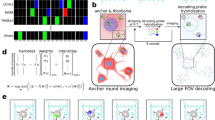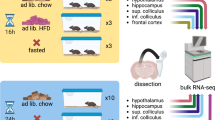Abstract
OBJECTIVE: The aim of the research was to identify genes specially expressed in the obese state and potentially involved in the pathogenesis of obesity.
DESIGN AND SUBJECTS: We used the technique of suppression subtractive hybridization (SSH), which combines subtractive hybridization with PCR, to generate a population of PCR fragments enriched for transcripts of high or low abundance from differentially expressed genes. PolyA+ mRNA was isolated from subcutaneous abdominal adipose tissue of five massively obese (>35 kg/m2) and five normal-weight (<25 kg/m2) women. cDNA generated from RNA pooled from the obese subjects was contrasted by SSH with an excess of pooled cDNA from the normal-weight women.
RESULTS: Seventy-nine clones were obtained among which one showed by RT-PCR a higher expression in obese than in normal-weight subjects. This gene was shown to be predominantly expressed in adipose tissue in contrast to brain, liver, kidney, heart and skeletal muscle, and was called ‘Adipogene’. No expression was detected in lung, pancreas and placenta. The cDNA was 1.5 kb long with an open reading frame of 1004 nucleotides encoding a protein of 334 amino acids (37 kDa). No significant sequence similarity was found in databanks, except for weak amino acid homologies with prokaryotic AraC/XylS transcriptional regulator family. Adipogene is encoded on chromosome 8, less than 1 centiMorgan (cM) from the β3 adrenergic receptor (ADRB3) locus. Weak linkages were observed with body mass index (BMI) and three microsatellite markers located within 10 cM of Adipogene, whereas no linkage was observed with Trp64Arg ADRB3 polymorphism using the Québec Family Study database.
CONCLUSION: Using the SSH technique, we have identified a new gene, called Adipogene, which is overexpressed in the adipose tissue of the obese individuals and could be involved in obesity.
This is a preview of subscription content, access via your institution
Access options
Subscribe to this journal
Receive 12 print issues and online access
$259.00 per year
only $21.58 per issue
Buy this article
- Purchase on Springer Link
- Instant access to full article PDF
Prices may be subject to local taxes which are calculated during checkout



Similar content being viewed by others
References
Chagnon YC, Pérusse L, Weisnagel SJ, Rankinen T, Bouchard C . The human obesity gene map: the 1999 update Obes Res 2000 8: 89–117.
Clément K, Vaisse C, Lahlou N, Cabrol S, Pelloux V, Cassuto D, Gourmelen M, Dina C, Chambaz J, Lacorte JM, Basdevant A, Bougnères P, Lebouc Y, Froguel P, Guy-Grand B . A mutation in the human leptin receptor gene causes obesity and pituitary dysfunction Nature 1998 392: 398–401.
Krude H, Biebermann H, Luck W, Horn R, Brabant G, Gruters A . Severe early-onset obesity, adrenal insufficiency and red hair pigmentation caused by POMC mutations in humans Nature Genet 1998 19: 155–157.
Jackson RS, Creemers JW, Ohagi S, Raffin-Sanson ML, Sanders L, Montague CT, Hutton JC, O'Rahilly S . Obesity and impaired prohormone processing associated with mutations in the human prohormone convertase 1 gene Nature Genet 1997 16: 303–306.
Montague CT, Farooqi IS, Whitehead JP, Soos MA, Rau H, Wareham NJ, Sewter CP, Digby JE, Mohammed SN, Hurst JA, Cheetham CH, Earley AR, Barnett AH, Prins JB, O'Rahilly S . Congenital leptin deficiency is associated with severe early-onset obesity in humans Nature 1997 387: 903–908.
Strobel A, Issad T, Camoin L, Ozata M, Strosberg AD . A leptin missense mutation associated with hypogonadism and morbid obesity Nature Genet 1998 18: 213–215.
Ozata M, Ozdemir IC, Licinio J . Human leptin deficiency caused by a missense mutation: multiple endocrine defects, decreased sympathetic tone, and immune system dysfunction indicate new targets for leptin action, greater central than peripheral resistance to the effects of the leptin, and spontaneous correction of leptin-mediated defects J Clin Endocrinol Metab 1999 84: 3686–3695.
Yeo GS, Farooqi IS, Aminian S, Halsall DJ, Stanhope RG, O'Rahilly S . A frameshift mutation in MC4R associated with dominantly inherited human obesity Nature Genet 1998 20: 111–112.
Vaisse C, Clément K, Guy-Grand B, Froguel P . A frameshift mutation in human MC4R is associated with a dominant form of obesity Nature Genet 1998 20: 113–114.
Hinney A, Schmidt A, Nottebom K, Heibult O, Becker I, Ziegler A, Gerber G, Sina M, Gorg T, Mayer H, Siegfried W, Fichter M, Remschmidt H, Hebebrand J . Several mutations in the melanocortin-4 receptor gene including a non-sense and a frameshift mutation associated with dominantly inherited obesity in humans J Clin Endocrinol Metab 1999 84: 1483–1486.
Liang P, Pardee AB . Differential display of eukaryotic messenger RNA by means of the polymerase chain reaction Science 1992 257: 967–971.
Lisitsyn N, Wigler M . Cloning the differences between two complex genomes Science 1993 259: 946–951.
Diatchenko L, Lau YF, Campbell AP, Chenchik A, Moqadam F, Huang B, Lukyanov S, Lukyanov K, Gurskaya N, Sverdlov ED, Siebert PD . Suppression subtractive hybridization: a method for generating differentially regulated or tissue-specific cDNA probes and libraries Proc Natl Acad Sci USA 1996 93: 6025–6030.
Diatchenko L, Lukyanov S, Lau YF, Siebert PD . Suppression subtractive hybridization: a versatile method for identifying differentially expressed genes Meth Enzymol 1999 303: 349–380.
Tkatchenko AV, Le Cam G, Leger JJ, Dechesne CA . Large-scale analysis of differential gene expression in the hindlimb muscles and diaphragm of mdx mouse Biochim Biophys Acta 2000 1500: 17–30.
den Hollander Al, ten Brink JB, de Kok YJ, van Soest S, van den Born LI, van Driel MA, van de Pol DJ, Payne AM, Bhattacharya SS, Kellner U, Hoyng CB, Westerveld A, Brunner HG, Bleeker-Wagemakers EM, Deutman AF, Heckenlively JR, Cremers FP, Bergen AA . Mutations in a human homologue of Drosophila crumbs cause retinitis pigmentosa (RP12) Nature Genet 1999 23: 217–221.
Stier S, Totzke G, Grunewald E, Neuhaus T, Fronhoffs S, Sachinidis A, Vetter H, Schulze-Osthoff K, Ko Y . Identification of syntenin and other TNF-inducible genes in human umbilical arterial endothelial cells by suppression subtractive hybridization FEBS Lett 2000 467: 299–304.
Zanders ED, Goulden MG, Kennedy TC, Kempsell KE . Analysis of immune system gene expression in small rheumatoid arthritis biopsies using a combination of subtractive hybridization and high-density cDNA arrays J Immunol Meth 2000 233: 131–140.
Dusserre E, Moulin P, Vidal H . Differences in mRNA expression of the proteins secreted by the adipocytes in human subcutaneous and visceral adipose tissues Biochim Biophys Acta 2000 1500: 88–96.
Montague CT, O'Rahilly S . The perils of portliness: causes and consequences of visceral adiposity Diabetes 2000 49: 883–888.
Altschul SF, Gish W, Miller W, Myers EW, Lipman DDJ . Basic local alignment search tool J Mol Biol 1990 215: 403–410.
Walter AM, Spillet CJ, Thomas P, Weissenbach J, Goodfellow PN . A method for constructing radiation hybrid maps of whole genomes Nature Genet 1994 7: 22–28.
Gagnon J, Mauriège P, Roy S, Sjöström D, Chagnon YC, Dionne FT, Oppert JM, Pérusse L, Sjöström L, Bouchard C . The Trp64Arg mutation of the beta3 adrenergic receptor gene has no effect on obesity phenotypes in the Quebec Family Study and Swedish Obese Subjects cohorts J Clin Invest 1996 98: 2086–2093.
Gallegos M-T, Schleif R, Bairoch A, Hofmann K, Ramos JL . AraC/XylS family of transcriptional regulators Microbiol Mol Biol Rev 1997 61: 393–410.
Mitchell BD, Cole SA, Comuzzie AG, Almasy L, Blangero J, MacCluer JW, Hixson JE . A quantitative trait locus influencing BMI maps to the region of the beta-3 adrenergic receptor Diabetes 1999 48: 1863–1867.
Lee JH, Reed DR, Li WD, Xu W, Joo EJ, Kilker RL, Nanthakumar E, North M, Sakul H, Bell C, Price RA . Genome scan for human obesity and linkage to markers in 20q13 Am J Hum Genet 1999 64: 196–209.
Allison DB, Heo M, Faith MS, Pietrobelli A . Meta-analysis of the Trp64Arg polymorphism in the b3 adrenergic receptor with body mass index Int J Obes Relat Metab Disord 1998 22: 559–566.
Chagnon YC, Pérusse L, Bouchard C . Familial aggregation of obesity, candidate genes and quantitative trait loci Curr Opin Lipidol 1997 8: 205–211.
Acknowledgements
Thanks are expressed to Guy Fournier, and Dr Germain Thériault from the Laval University, and to Drs Picard Marceau and Simon Biron from the Surgery Department of Hôpital Laval, Ste-Foy, Québec, who provided us with the adipose tissue samples. This research was supported by the Medical Research Council of Canada (PG-11811 and MT-13960), the Institut Français pour la Nutrition, and the Institut National de la Santé et de la Recherche Médicale.
Author information
Authors and Affiliations
Corresponding author
Rights and permissions
About this article
Cite this article
Larose, M., Bouchard, C. & Chagnon, Y. A new gene related to human obesity identified by suppression subtractive hybridization. Int J Obes 25, 770–776 (2001). https://doi.org/10.1038/sj.ijo.0801604
Received:
Revised:
Accepted:
Published:
Issue Date:
DOI: https://doi.org/10.1038/sj.ijo.0801604
Keywords
This article is cited by
-
A Novel pro-adipogenesis factor abundant in adipose tissues and over-expressed in obesity acts upstream of PPAR? and C/EBP?
Journal of Bioenergetics and Biomembranes (2013)



